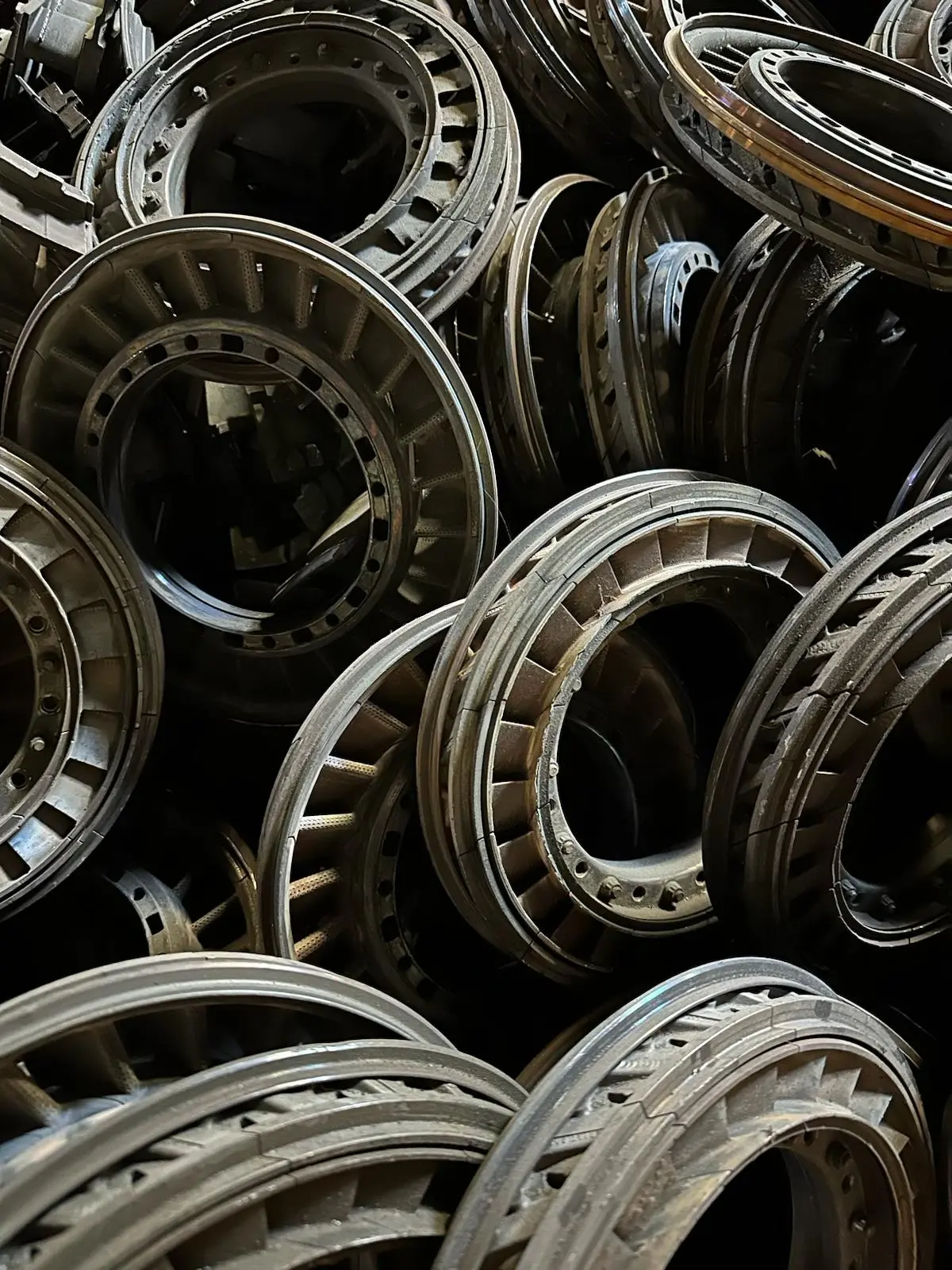

Titanium (Ti) recycling has emerged as a vital industrial process due to the increasing global demand for this strategic metal, especially in aerospace, medical, and high-performance industrial applications. Titanium’s high cost and energy-intensive primary production dominated by the Kroll process make recycling a compelling alternative for reducing both environmental impacts and raw material dependency. The recycling process faces dual challenges: recovering high-purity titanium economically and overcoming contamination, especially from oxygen. The current landscape of titanium recycling is characterized by a combination of scrap classification, metallurgical melting technologies, and ongoing efforts in chemical deoxidation to close the loop on high-quality Ti reuse.
The production of ferrotitanium (Fe-Ti) begins with the careful sorting and weighing of input materials to ensure they meet the target compositions required for the alloy. This is followed by the induction melting process, which takes place under an argon atmosphere to prevent oxidation and nitrogen uptake. Once the melting process is complete, the molten material is cast into ingots, which are then mechanically broken down into specified sizes for further use. This method is particularly advantageous as it can utilize lower-grade titanium scrap, which is often unsuitable for high-purity applications, although it's important to note that ferrotitanium production does not permit the complete recycling of materials back into titanium metal, and thus represents a form of downcycling.
High-purity titanium scrap is ideally suited for direct recycling into ingots through various vacuum-based remelting processes, which are essential due to titanium’s strong affinity for oxygen and nitrogen at elevated temperatures. One such process is Vacuum Arc Remelting (VAR), where the scrap is integrated into a consumable electrode that is melted under vacuum conditions. Additionally, both Plasma Arc Melting (PAM) and Electron Beam Melting (EBM) are utilized to melt titanium in a protective or high-vacuum environment, with EBM having the added benefit of purification by removing high-density inclusions like tungsten carbide. Another emerging technology, Cold Crucible Induction Melting (CCIM), employs water-cooled copper crucibles that are segmented to allow for eddy current penetration, enabling controlled melting without contamination from refractories. The primary advantage of these advanced melting technologies is their capability to produce aerospace-grade titanium. However, their broader adoption is constrained by the high costs and complexity of the equipment, alongside the necessity for high-purity feedstock.
Various lab-scale deoxidation methods have been explored to address the challenge of oxygen contamination in titanium recycling. One approach is Solid-State Electrotransport, which can effectively reduce oxygen content, although it is hindered by geometric constraints and the complexity of the required equipment. Another method is Calcium Deoxidation, where calcium reacts with oxygen to form calcium oxide (CaO). This technique is enhanced by employing molten salt fluxes, which help dissolve CaO, thereby reducing its activity and favoring further deoxidation.
Additionally, Rare-Earth Metal Deoxidation, particularly through the use of yttrium (Y), has shown promising results due to its strong thermodynamic driving forces that facilitate oxygen removal. Hydride Deoxidation presents another innovative strategy, wherein magnesium is combined with titanium hydride formation under hydrogen pressure, successfully reducing oxygen levels in powder-based titanium from 0.35% to 0.16%.
Despite the theoretical effectiveness of these methods, none have yet achieved commercial scalability. As a result, the current practice in titanium recycling primarily relies on diluting oxygen-rich scrap with virgin sponge titanium..
In practice, titanium recycling involves a multi-step integration of mechanical, thermal, and chemical techniques. The industry distinguishes between closed-loop recycling, where high-grade scrap is directly reused (e.g., aerospace machining swarf), and open-loop recycling, which involves remelting or alloying low-grade scrap for secondary applications like ferrotitanium.
Titanium's reactivity necessitates processing under vacuum or inert conditions at virtually every stage. While high-grade scrap is routinely reprocessed using VAR or EBM, lower-grade scrap lacks an economically viable purification method, making its reuse limited or relegated to alloying agents.
The development of commercial deoxidation technologies would be a game-changer, enabling a wider range of Ti scrap to be fully reintegrated into the titanium supply chain. Countries without primary sponge titanium production, such as South Korea, could significantly benefit from such innovations, enhancing self-sufficiency and reducing reliance on imports.
Titanium recycling is an essential process for the sustainable supply of this strategic metal, yet its industrial viability is constrained by technical limitations most notably, oxygen contamination. While advanced vacuum melting technologies ensure the production of high-purity ingots from selected scrap, the challenge of economically deoxidizing titanium remains unresolved at scale. As such, titanium recycling continues to rely on a tiered approach: remelting for high-quality scrap, downcycling into alloys for lower-grade scrap, and blending with virgin titanium to meet purity requirements. Ongoing research into deoxidation, especially involving calcium, rare-earth elements, and hydride methods offers a pathway to a more circular and resilient titanium economy. Further industrial-scale validation and process optimization will be critical for realizing this potential.